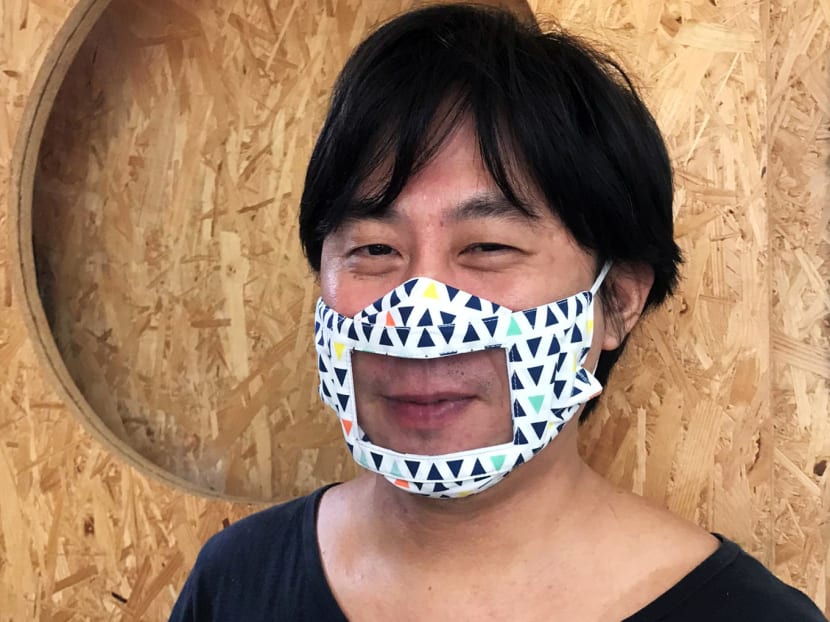Heroes Unmasked: Volunteers sew see-through masks for teachers of deaf students
SINGAPORE — Sewing communities abroad in Indonesia, Belgium, France and elsewhere rallied to produce see-through masks to make it possible for those who are deaf, or hard of hearing, to lip-read when someone is wearing a mask.
As Singapore battles the Covid-19 outbreak, TODAY’s Heroes Unmasked series highlights those who are doing their bit to spread kindness and compassion during this period. In this instalment, we speak to volunteers who responded to a call by SG Enable, an agency dedicated to enabling persons with disabilities, to produce 300 masks before school reopens for teachers and staff members working with the deaf community.
SINGAPORE — Sewing communities abroad in Indonesia, Belgium, France and elsewhere rallied to produce see-through masks to make it possible for those who are deaf, or hard of hearing, to lip-read when someone is wearing a mask.
Singapore’s seamstresses and crafters have similarly come together to help the local deaf community.
Since about two weeks ago, two sets of volunteers have been hunched over their sewing machines to make 300 masks for 150 teachers and allied education staff members before schools reopen in phases from June 2, as part of the easing of circuit breaker measures.
One group is made up of Ms Chan Siang Choo, 56, a senior director of an information technology company, and Ms Rebecca Teo, who declined to reveal her age, while the other group comprises seven tailors from sewing studio Uyii.
They responded to a call by SG Enable — an agency dedicated to enabling persons with disabilities — to design prototypes for a see-through mask. Ms Teo, a retiree who works part-time now, used to be a board member there.
These masks will be given to teachers and allied education staff members from the Singapore Association for the Deaf (SADeaf), Lighthouse School and Canossian School.
Outside the deaf community, few people know how important lip-reading is as a complement to sign language, which deaf individuals rely on primarily to communicate, said Ms Chan.
While transparent face shields could technically be used instead of masks, head of deaf education resources at SADeaf, Ms Barbara D’Cotta, said face masks are thought to offer more protection from Covid-19.
Elaborating on the need for see-through masks, she said several adults and children in the hearing-impaired community have found this period to be “especially challenging”, with miscommunication happening because they are unable to take cues from facial expressions and mouth movements.
“Even as someone who is not deaf and hard of hearing, I still sometimes look at people’s mouths when they talk. For the deaf and hard of hearing, this is significantly more important,” she said.
Studies estimate that 30 to 40 per cent of speech sounds can be lip-read, but not every word needs to be understood for lip-reading to be useful.
While Ms Chan, a sewing enthusiast, was already familiar with mask-making after she helped to sew masks for migrant workers, she told TODAY that she found sewing see-through masks a bit of a challenge at first.
She had to find a way to incorporate the plastic into the mask, while maintaining a gap between the plastic piece and the user’s mouth.
After a few tries, she found that she could add a slight curvature to the plastic if she attached the plastic piece after she finished sewing the fabric parts of the mask.
The other challenge she had was ensuring the mask did not fog up when the wearer spoke. After searching online, she found that rubbing in a layer of soap on the plastic gave it anti-fog properties.
Ms Chan also had problems buying materials she needed to make the mask, with most stores closed during the circuit breaker.
She ended up using clear A4 plastic folders from a friend’s office as the see-through portion of the mask.
With each portion measuring 2.5 inches by 3.5 inches (about 6cm by 9cm), one file can be used for 14 masks.
With Ms Teo’s help cutting the fabric and hand-sewing parts of the mask, Ms Chan has managed to complete 50 masks so far.
Each mask takes 30 minutes to complete — twice the time it takes to finish a regular mask.
As Ms Chan holds a full-time job and is working from home this period, she will be inching towards the target by taking two to three hours after work to produce four or five masks, and seven to eight hours to produce up to 16 masks per day on weekends.
These hours set aside for sewing, however, are not making her feel overwhelmed.
“Volunteering for projects like this helps me say: ‘Okay, it is six o’clock, seven o’clock, let us get away from the computer. Let us do some sewing.’ Otherwise, if you have nothing to do, invariably, you will end up in front of the computer checking this, checking that,” she said.
Mr Benny Ng, founder of Uyii, said his team came aboard as he believed that everyone deserves to be protected during this challenging period.
“If it is possible to make some simple adaptations to the conventional mask in order to be inclusive of the deaf community and help them better communicate while we are all required to wear masks, then I want to do my part and help in this small way,” he told TODAY.
His studio is also working with SG Enable to distribute some of its prototypes to deaf students for their feedback.
He intends for the product to be made available on its retail platform at www.independentmarket.sg.












